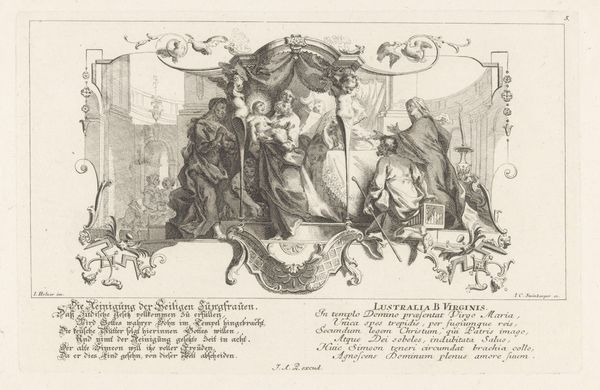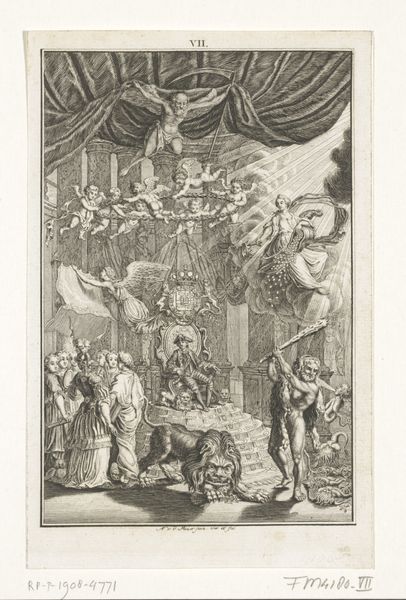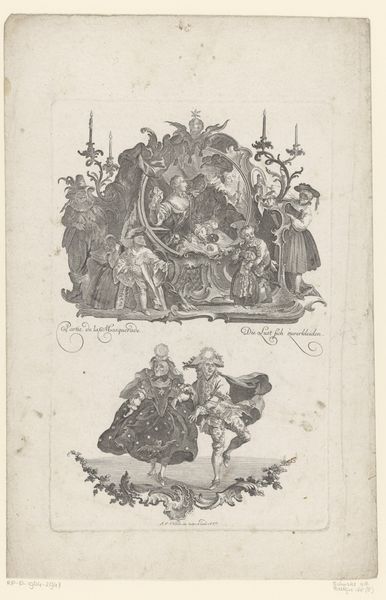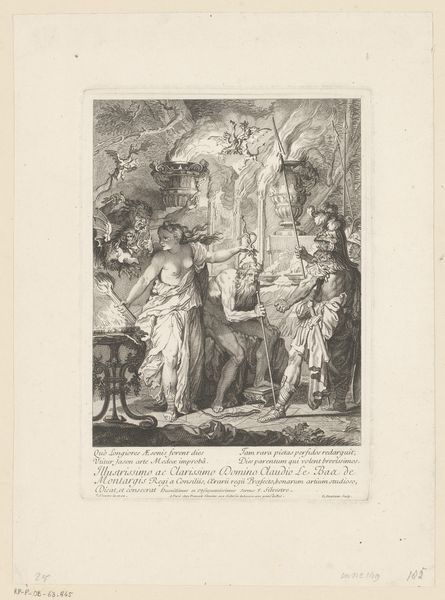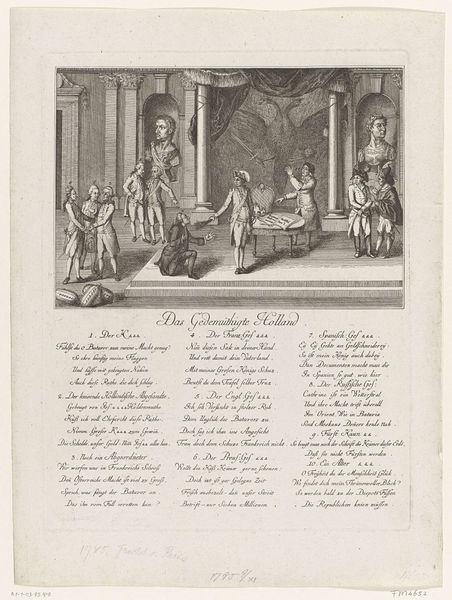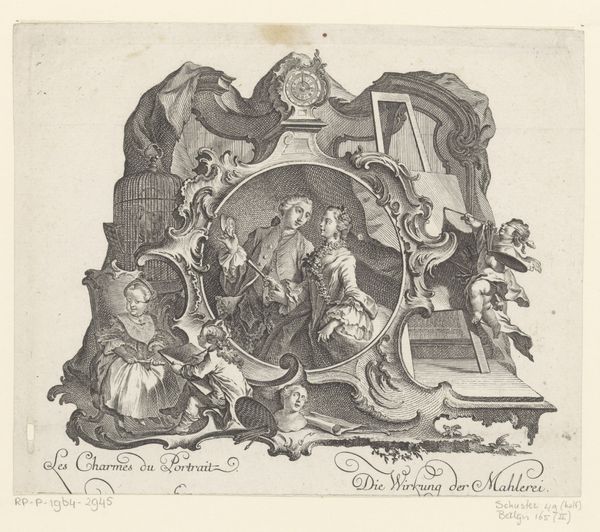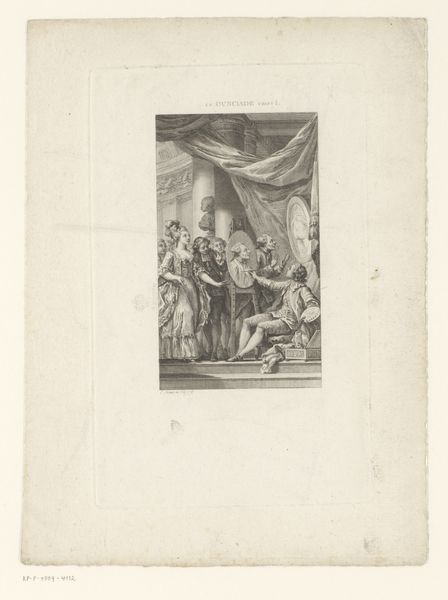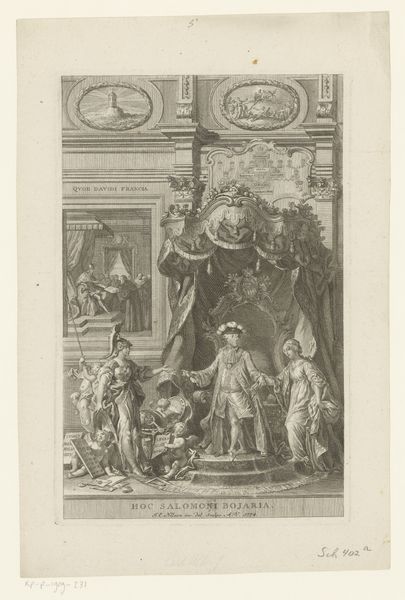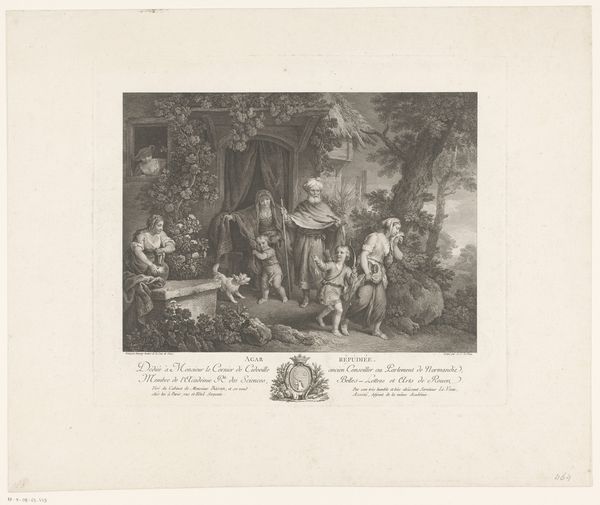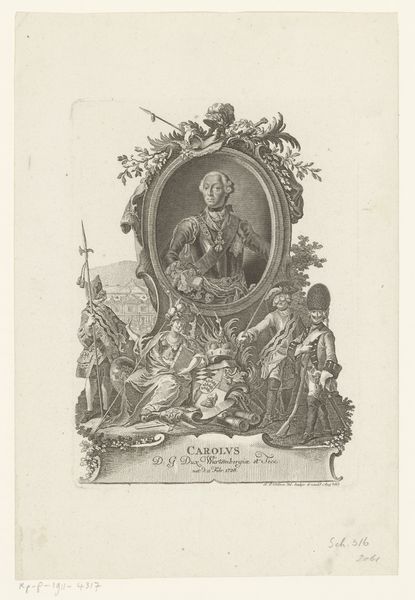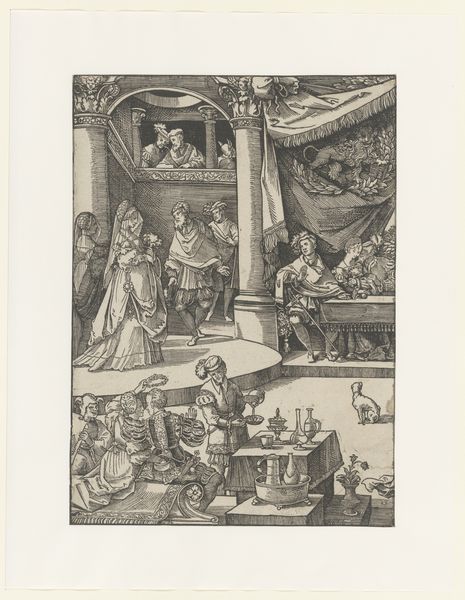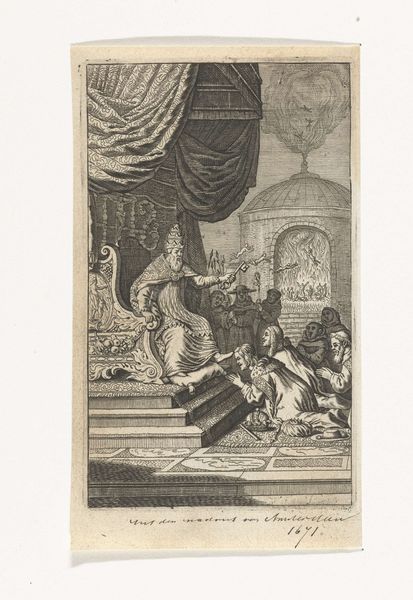
Dimensions: height 193 mm, width 181 mm
Copyright: Rijks Museum: Open Domain
Curator: Let's consider this engraving, "Portret van Frans I Stefan, Duits keizer en zijn familie," made sometime between 1730 and 1793 by Johann Daniel Herz. What grabs you first? Editor: Well, the sheer number of people and the formal arrangement strike me. It feels very posed, and quite frankly, a little overwhelming. I'm curious how you interpret this work? Curator: I see an attempt to solidify power through a very specific visual language. Consider the engraving itself – a reproducible medium intended for wide distribution. This makes the image accessible beyond the court, disseminating an image of imperial strength and family continuity to a broader public, almost like propaganda. Editor: So, it's less about artistic expression and more about mass communication of a specific idea? Curator: Exactly! We need to examine the materials used and the means of production, not just aesthetic qualities. How does the artist employ line and texture in this medium to create such an impactful visual statement? And, importantly, what is the social context? We see the family meticulously positioned within an imposing architectural space. It begs us to question how much these representations mirror their realities. What kind of labor underpinned its production, and for what end goal? Editor: So, the engraving as a *thing,* as a physical object meant to be circulated, is as important as the figures depicted? Curator: Absolutely! The material, the method, and the message are intertwined. The ruling family leverages this new media for control. By producing multiples and distributing these representations, how might they have further impressed people to uphold specific ideals in society? Editor: I never considered approaching portraiture quite this way. It definitely opens up a new line of inquiry, thinking about the 'how' and 'why' of its creation in relation to labor and consumption. Curator: Indeed, analyzing it from the perspective of production changes our perception of Baroque artwork and society.
Comments
No comments
Be the first to comment and join the conversation on the ultimate creative platform.
